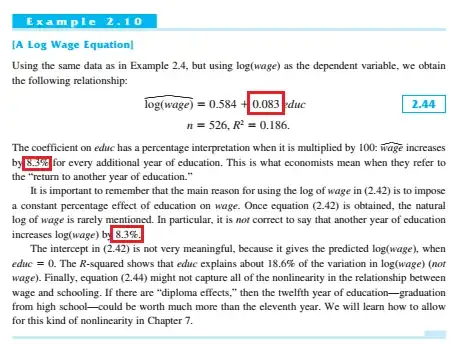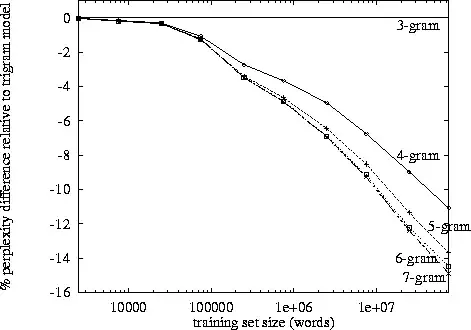$y = 4 + 2.5\,x + u$
For an increase of 1 unit of $X$ (that is, $X$ to $X+1$), we expect an increase $2.5$ units of $Y$ (that is, $Y$ to $Y+2.5$).
Is that right?
What if there's a/an $\ln$?
$\ln(y) = 1.7 + 0.083\,x + u$
For an increase of 1 unit of $X$ (that is, $X$ to $X+1$), we expect:
a/an $8.3\%$ increase in $Y$ (that is, $Y$ to $Y(1+8.3%)$)?
a/an $0.083\%$ increase in $Y$ (that is, $Y$ to $Y(1+0.083%)$)?
The above is supposed to make use of the fact that log difference is approximately equal to percentage change.
$\ln(y) = 4 + 0.083\,\ln(x) + u$
For a $1\%$ increase in $X$ (that is, $X$ to $X(1+1%)$), we expect:
a/an $8.3\%$ increase in $Y$ (that is, $Y$ to $Y(1+8.3%)$)?
a/an $0.083\%$ increase in $Y$ (that is, $Y$ to $Y(1+0.083%)$)?
The above is supposed to make use of the fact that log difference is approximately equal to percentage change.
Apologies for the confusion everyone. I am wondering about this part in Introductory Econometrics by Wooldridge. It's been a few years since I've interpreted SLR coefficients.
Why is it in the first part $0.083$ becomes $8.3%$ (instead of $0.083%$) but in the second part $0.257$ becomes $0.257%$ (instead of $25.7%$)?

